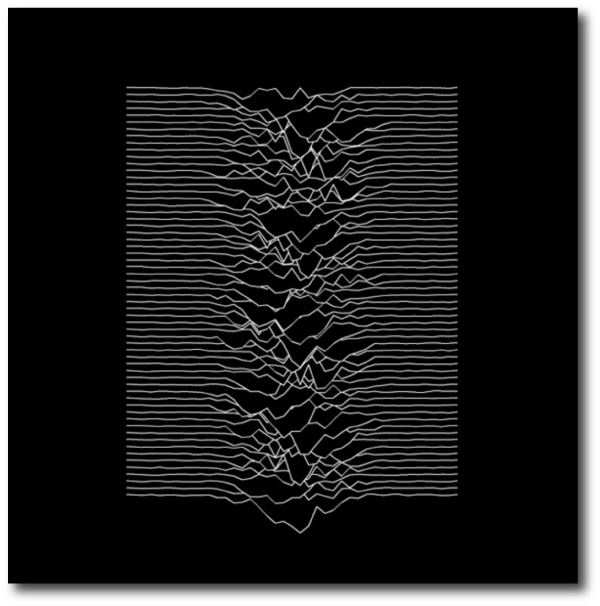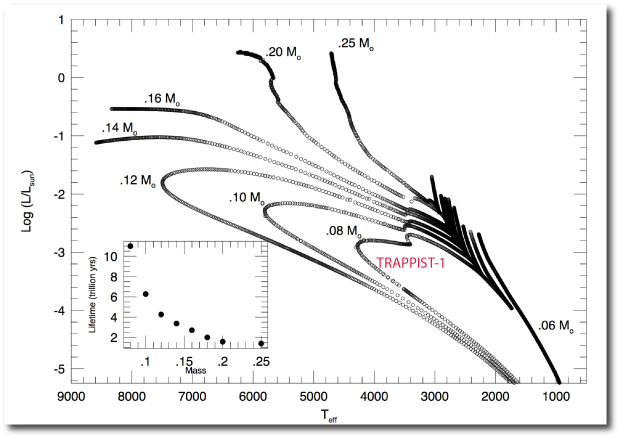With the likes of an Earth-mass world orbiting Proxima Centauri and a staggeringly photorealistic better-than-the-real-thing rendering of Kepler 186f, it’s gotten increasingly difficult to mount a planet discovery press conference that achieves adequate signal-to-noise. Nonetheless, the new Gillon et al Nature paper detailing seven transiting, roughly Earth-sized, roughly Earth-mass planets orbiting a faint nearby red dwarf is a jaw-dropping document.
There’s a lot to like. The system is a pleasingly scaled-up version of the Jovian satellite systems and a pleasingly scaled-down version of the Kepler multiple-transit systems. It supports the empirical observation that the default satellite/planet formation process in the vicinity of objects ranging in mass from Uranus all the way up to the Sun tends to separate ~2×10^-4 of the system mass into a region large enough to delineate an average density of ~2×10^-5 g/cm^3. It’s not at all clear why this should be the case.
There’s a great deal of interest in planets that are more or less at room temperature. This means that, empirically speaking, the default planet-formation process selects (the Sun notwithstanding) the bottom of the main sequence as one’s best a-priori bet for Earth-mass planet with an Earth-like temperature. I’ll resist here the temptation to engage in holy hokey habitable zone talk. Chances of life, plate tectonics, proper ocean depths, etc. Let’s stick to the facts. What we do know is that if more than one of the Trappist-1 planets harbor advanced civilizations, and if the stock markets on those planets trade correlated securities with tight bid-offer spreads, then there will be excellent interplanetary latency arbitrage opportunities.
2MASS J20362926-0502285, now much better known as TRAPPIST-1, straddles the boundary between the lowest mass main sequence stars and the highest mass brown dwarfs. Depending on precisely what its mass and metallicity turn out to be, it could either be arriving at self-sustaining core hydrogen fusion, which would make it a main sequence star (about a 60% chance) or it could be currently achieving its peak brown dwarf luminosity and bracing for a near-eternity of cooling into obscurity (about a 40% chance). Let’s assume that TRAPPIST-1 is a full-blown star. If that’s the case, it’s got a twelve trillion year main-sequence life span ahead of it. Here’s what it’s evolution on the HR diagram will look like, in comparison to other low-mass objects:
An object with solar composition and 0.08 solar masses never turns into a red giant. As time goes on, it maintains a near-constant radius, and slowly burns nearly all of its hydrogen into helium. In roughly 10 trillion years, TRAPPIST-1 will reach a maximum temperature of ~4000K, pushing it briefly toward K-dwarf status for a few tens of billions of years, before eventually running out of fuel and fading out as a degenerate helium dwarf.
At the present moment, the spin angular momentum of TRAPPIST-1 is very close to the summed angular momentum of its seven known planets (both total, to one significant figure, 10^47 g cm^2 s^-1.). The planets, owing to their tight orbital radii, are safe from passing white dwarfs for quadrillions of years in the galactic potential, and are immune to the usual risk of red giant engulfment. A long, slow tidally mediated drama will unfold in which the planets will somehow act out, with resonances and tidal decay, punctuated by Roche-radius destructions and re-accretions, the dictate that the minimum energy configuration places all the system mass at the center and all the system angular momentum out at infinity.
A long-term buy.




Can you share a reference for the HR diagram above?
Laughlin, Bodenheimer & Adams 1997 “The End of the Main Sequence” ApJ, 482 420
Pingback: Dvärgstjärnans 7 planeter: 3 skäl att fascineras över Trappist-1 | Populär Astronomi
Just how small could a multi-star TRAPPIST-1 system be and still have stable planetary orbits? Say a quadruple system – two binaries orbiting each other.